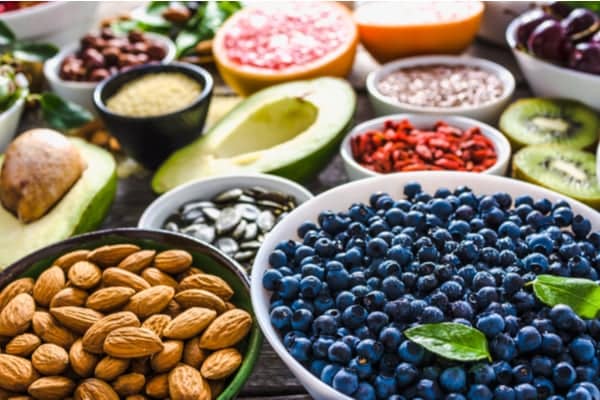Does zinc cure the common cold? This is a common, and serious question these days, as many people have colds and are looking for anything that will help. The answer is No. Zinc is a non soluble metal consisting of two zinc atoms sharing a pair of electrons that is used in industry to galvanize steel.
However, one atom of zinc with its 2+ electrical charge is water soluble. It combines with 4 to 8 molecules of water to form hydrated, or solution, zinc ions carrying a 2+ charge. Unlike the metal zinc, solution zinc ions (Zn2+ ions) have powerful, and strongly beneficial effects on upper respiratory infections (rhinovirus common colds). Rhinoviruses, one of the five genera of the picornavirus RNA virus family of which much is known, are now known to be the cause of the great majority of colds.
Colds are infections of the nasal cavity – and especially infections of the highly vascularized nasal mucosal turbinates of the nasal cavity. The digital helical CT studies by Shigeru Ishikawa, MD, PhD, of the Department of Otolaryngology at Kanazawa Municipal Hospital, Japan, greatly help visualize the nasal cavity itself, and particularly the highly vascularized mucosal turbinate tissues covering the nasal turbinate bones. According to Dr. Ishikawa, the images marked as “untreated” are similar to what one would find in a person experiencing a common cold.
Bruce Korant, PhD, of Du Pont Chemicals showed in Nature in 1974, that Zn2+ ions were strongly antirhinoviral. Others have shown that Zn2+ ions help T-cell lymphocytes release large amounts of interferon-gamma, a powerful antiviral agent. Other functions of Zn2+ ions helpful in treating or curing common colds include anti-inflammatory activities, destruction of histamine, stabilization of cell plasma membranes (prevents cell leakage, congestion and runny nose), and stimulates T-cell lymphocytes into action.
Wouldn’t a nasal spray releasing Zn2+ ions be the real cure? It certainly seems logical! But, nature says, “No way!” Nasal sprays and nose drops releasing Zn2+ ions have been used for over a century as a mild, short acting, nasal decongestant having no role in shortening colds or curing colds. In his 1990 European patent Application (number 381522) Professor Derek Bryce-Smith of the University of Reading, Great Britain, found that frequent administration of strong zinc sulfate nose drops provided only a mild nasal decongestant effect — consistent with literature published in the 1930s.
Conversely, Zn2+ ions released into the mouth can shorten or cure common colds because they are absorbed into tissues through the mouth-nose biologically closed electric circuit (BCEC), a recently discovered feature of human physiology. The directionality of the mouth-nose BCEC is easily demonstrated with an ohmmeter. Simply reversing the leads shows a diode-like differential in resistance. Zn2+ ions from nasal spray or drops are repelled from nasal tissue surfaces by the same mouth-nose BCEC.
Zinc gluconate lozenges releasing Zn2+ ions at 5 to 8 millimolar concentration kept in contact with the oral mucosa for 20 to 30 minutes used nine times a day definitely shortened common cold symptoms by 5 to 7 days! This astonishing effect was documented in two independent clinical studies, one in the U.S. in 1984, and the other in Great Britain, at the Medical Research Council Common Cold Unit (MRC) in 1987. As follow up to these reports, many common food ingredients (aspartic, citric, tartaric, other food acids, acacia, and strong bases) were used in other studies of “flavor masked” zinc lozenges in experimental therapy of colds. The researchers did not know that those chemicals strongly bound Zn2+ ions rendering those lozenges ineffective against colds, setting back common cold research by 10 years or more.
The technology behind efficacious zinc lozenges involves complex mathematics in the arcane field of solution chemistry. That is a study of what happens to metal compounds when they are dissolved in water. As shown in the figure, zinc chloride and zinc acetate release 100% of their zinc as antirhinoviral Zn2+ ions at physiologic pH 7.4, while zinc gluconate releases 30% of its zinc as Zn2+ ions at pH 7.4 according to solution chemistry calculations by Guy Berthon, PhD, INSERM Unit 305, Toulousse, France. These three merited close study. Other common zinc compounds do not release Zn2+ ions at physiologic pH 7.4 and have no utility in treating common colds. Zinc chloride reacted with lozenge ingredients, because it was too unstable. Zinc gluconate mixed with sweet tablet bases (except fructose – see MRC study) became offensively bitter after lozenges aged for a while.
Properly prepared zinc acetate lozenges release 100% of their zinc as Zn2+ ions at physiologic pH. They shorten common colds dependent only upon zinc ion availability (ZIA), a name for zinc lozenge strength derived from Fick’s laws of permeability, the pharmacology law governing absorption of solutes through membranes and tissues. Efficacy starts at a ZIA strength of 25, where colds last a day or two less than normal (and treatment is hardly worthwhile). Amazingly, stronger ZIA 50 zinc acetate lozenges were strong enough for the U.S. Patent and Trademark Office to grant the world’s first and only “Cure for Common Cold” patent. Lozenges having a ZIA strength of 50 to 100 shorten colds symptoms by 5 to 7 days; and lozenges having a ZIA 100 or higher strength often result in a “cure” in less than a day with no further treatment.
Further information concerning the importance of zinc ions being available at physiologic pH for efficacy to result in treating common colds is slightly more technical follows:
Fraction of Zinc as Zn2+ Ions from Several Compounds at Physiologic pH 7.4 with Discussion
The only relevant pH in common cold therapy with zinc lozenges is the 7.35 to 7.4 range. All acids and other bases are quickly buffered to that pH range in blood, lymph, and tissue. Acid-base balance in body tissues and fluids is carefully regulated in a state of good health and is always maintained within normal physiologic limits.
The 7.4 pH of blood and extracellular fluid is close to the natural 6.8 pH of 20 mMol zinc acetate, suggesting good absorption potential as well as close approximation to laboratory pH conditions.
When using zinc lozenges, salivary proteins complex with and precipitate some Zn2+ ions at salivary pH, while some zinc is swallowed, and some is absorbed into oral and oropharyngeal tissues and is held at pH 7.4. Once absorbed, some Zn2+ ions are chelated by blood, lymph, and tissue while others remain in a hydrated ionic form. Whether or not a given amount of a zinc compound can 1) provide sufficient Zn2+ ions to be antirhinoviral in nasal tissue, 2) induce local interferon production, 3) provide local cell membrane stabilization, and 4) provide Zn2+ ions for the numerous other physiologic interactions at pH 7.4 is determined by the chemical stability of the zinc complex. Only absorbed Zn2+ ions available at pH 7.4 migrating from oral tissues into nasal and nasopharyngeal tissues are useful in shortening common colds.
Zinc compounds having very low stability constants such as zinc acetate release useful amounts of Zn2+ ions at pH 7.4, while zinc compounds with higher stability constants do not. For example, at pH 7.4, 100% of the zinc from zinc acetate (log K1 = 1.03) remains as hydrated Zn2+ ions, while only 30% of the zinc from zinc gluconate remains as Zn2+ ion (log K1 = 1.70). The availability of Zn2+ ions from zinc sulfate, lactate, malate, maleate, tartarate, and succinate (log K1 = 1.8 to 2.8) ranges in effect from less than desirable to useless for treating colds. Essentially no Zn2+ ions occur at pH 7.4 from zinc citrate, oxide, glutamate, tartarate, carbonate, glycinate, orotate, amino acid chelates, EDTA, and other highly chelated zinc compounds (log K1 = 4.5 to 16.5) as soluble or insoluble zinc complexes, rendering these compounds completely useless in treating colds.
Good nutrition will help to maintain a strong immune system to help ward off the common cold. We have provided a quick review here.



